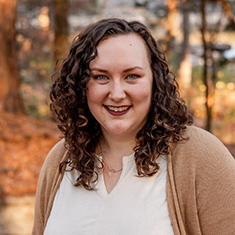The Feed the Future Land Tenure Assistance (LTA) activity—which has completed mapping of more than 36,000 land parcels in 26 villages with more than 27,000 Certificates of Customary Rights of Occupancy printed and registered—is a powerful example of how digital technology applied in a participatory process can enable rural people to strengthen their land rights.
The demarcation and mapping facilitated by the Mobile Application for Secure Tenure (MAST) has increased the speed of registration and certificate issuance, reduced costs, and engaged young people in a way that has led to wide acceptance of the program and prompted calls by government, donors, and other development agencies to implement the program nationally.
The U.S. Agency for International Development’s LTA program is moving the needle on land registration and security in a country where less than 10 percent of individually owned land is registered. And there are encouraging signs that this expansion of formal land titling is beginning to translate into income gains. Both women and men, for example, have been able to use their new CCROs to secure loans enabling them to invest in their land holdings.
Residents Included—From Start to Finish
From the moment the program is introduced to a village council to the issuing of the last CCRO, residents of each village are fully and directly involved in the registration process. Residents, for example, serve on Village Land and Adjudication Committees and the Village Land Use Planning Committees. A participatory rural appraisal approach is used to draft and approve Village Land Use Plans, which ensure that land parcels are not allocated and registered across village boundaries or in wetlands, and that corridors are set aside for pastoralists to move their cattle. These issues sometimes require negotiation and agreement between parties with competing interests but have to date been amicably resolved.

Residents also participate directly in the digital capture of land parcel data. They are invited to volunteer for one-week adjudicator and para-surveyor training in the use of MAST for land demarcation. Those who pass the course accompany the Adjudication Committee members, LTA staff, and District Land Office representatives to demarcate the boundaries of every land claim in the presence of neighboring claimants. They capture the GPS coordinates of the parcel boundaries using MAST on a smartphone or tablet, together with a GPS enhancer for greater accuracy.
Residents are trained in the registration process, as well as educated on their land rights, and legislation governing land tenure. These learning sessions take place at the Village Assembly, at hamlet-level meetings, at special meetings for women, and at schools. Participants are educated about the type of occupation which may be most suitable to protect their interests and informed about the right of women to have CCROs registered in their names as single occupants, as joint tenants, or as tenants in common with their husbands. Tanzanian law enshrines women’s right to occupy land. The number of claimants to date is close to equal between men (52 percent) and women (48 percent).
After claimants have been identified and parcel boundaries recorded, maps are produced for public display for two weeks at the Village Council office. During this period, residents inspect the maps and confirm their claims or raise objections and corrections.
Increased Efficiencies
LTA has greatly streamlined and automated the printing and processing of CCROs to increase speed and reduce costs. Up to 500 CCROs can be printed each day by a small team of District Land Office staff. Registered CCROs are returned to the Village Council, which retains hard copies in Village Registry Offices refurbished with LTA assistance to provide secure storage. Issuance ceremonies celebrate the claimants receiving their CCROs.
The high level of participation by residents and village leaders has proved to be invaluable in reducing disputes over boundaries, resolving intra-family disputes, and resolving land use planning conflicts. Disputes referred to the dispute resolution process make up less than 0.02 percent of all land parcels demarcated to date.
Involvement by district-level government officials at all stages of the program has resulted in District Land Office staff being fully engaged with the program and capable of conducting public outreach meetings, capturing and correcting the data, printing and registering the CCROs, and leading issuance ceremonies with ever-decreasing supervision by LTA.
Encouragingly, the program has been well received by the Ministry of Land Housing and Human Settlements Development, which recently moved to implement MAST and the processes used by LTA on other donor- and government-funded land registration programs. Ardhi University is collaborating with LTA to use its processes and MAST for its practical training of students and has asked DAI to provide technical assistance and set up an internship program.




